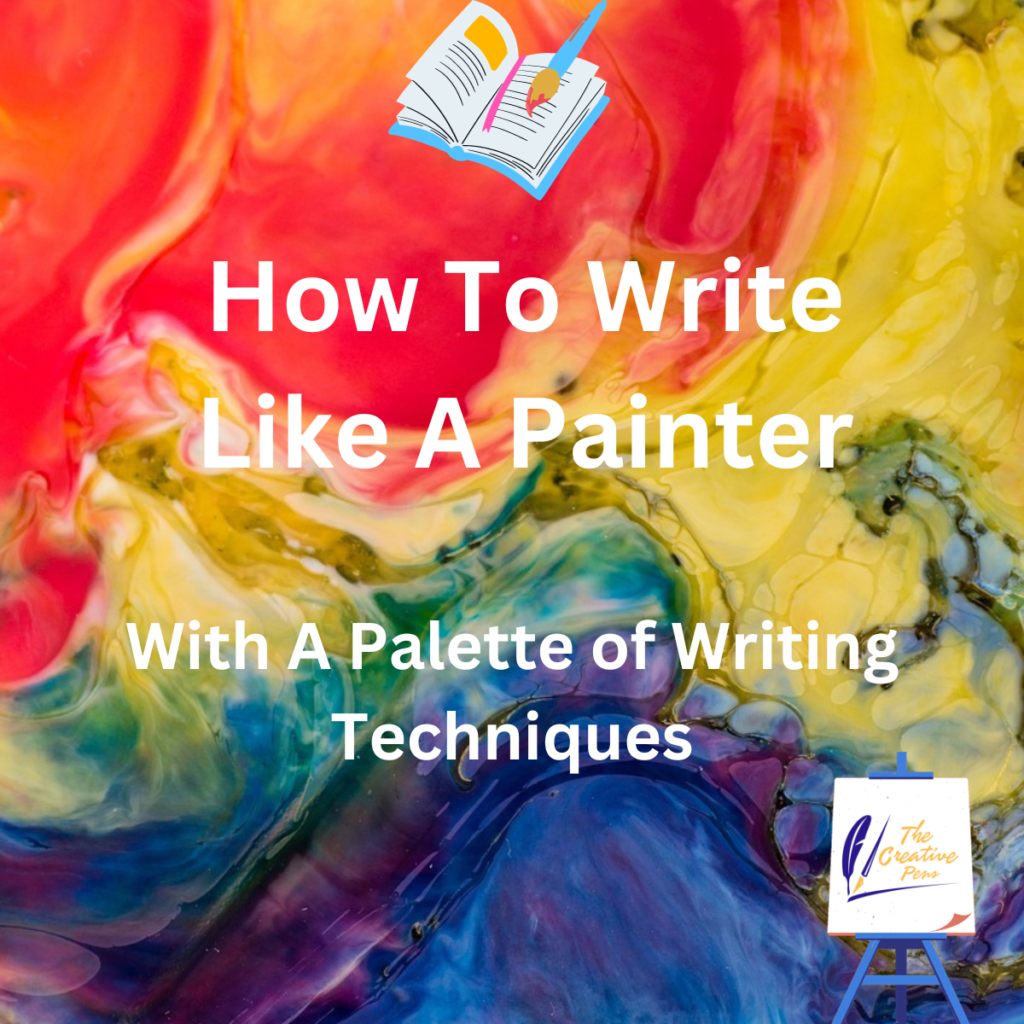With A Palette of Writing Techniques

You are a writer. But have you ever thought of yourself as an artist? Yes! Writing is an art, too. Just like there is a myriad of colors on an artist’s palette, as a writer, you too should have different writing styles in your kitty.
Let’s look at some different writing styles that can help you in your writing.
Descriptive Writing:
Just like an artist paints a picture with colors and gives you a sensory experience of what he wants to convey, you, as a writer, need to paint a vivid picture with your words. Imagine you want to evoke a beach scene. Engage your reader’s senses by describing the cool breeze of the ocean, the smell of the saltiness of the sea, or the feel of the soft sand on your toes.
Dialogue:
To breathe life into your writing, dialogue can help. Dialogue helps to reveal the personalities of the characters involved in the story. It makes your writing more vivid and adds a definition to your story plot. Try to give certain information in your written piece through dialogue.
Imagery:
Build powerful imagery in your reader’s minds by using evocative language. Draw them in by tickling their imagination with similes, metaphors, quotes, and symbolism.
Show, Don’t Tell:
This is a great technique for getting the character’s feelings across to the reader by using words to denote actions, thoughts and dialogues. For example, to describe someone who is lonely, you can write about her slumped shoulders and downcast eyes.
Point of View (POV):
Your choice of point of view or POV can affect the way readers connect to your story. Usually, a first-person POV establishes greater intimacy with your reader. At the same time, writing with a third-person POV gives your reader a broader perspective of the situation you are trying to convey.

Hooks and Clues
These are like tantalising breadcrumbs scattered throughout the story to reel the reader in the story plot. It gives hints of the coming events in a story and creates anticipation, keeping the reader hooked.
Flashbacks and Flashforwards:
If you want to build your narrative with an enticing incident, then flashbacks help to reveal the backstory and the reason for the situation. While flashforwards are predictive and hint at the upcoming events.
Character Development:
Just like an artist develops the characters in his painting, you, as a writer, should develop your characters along with the plot. It’s okay for your characters to have flaws. It’s okay for them to have dreams and desires. Your characters can grow throughout your story, too. This type of realistic portrayal helps your readers to relate to your content.
Suspense and Pacing:
Set the pace for your writing to keep the reader engaged. You can make the sentences snappy and writing suspenseful to increase the pace of your narrative or write more descriptive text to make it more introspective and slow-paced.
Humour, Wit and Irony
Adding these to your story adds more colorful hues to your prose. It makes certain incidents in your story more memorable. Sometimes, a humorous event can be used to start a story, or a witty repartee can be used to end it.
Questions
Questions help you to engage your reader. It acts as a powerful tool to emphasize your point and invites the reader to think and reflect.
Editing and Revision:
Editing and revision offer the finishing touches to your crafted price of writing. Go over it with a fine-toothed comb and weed out grammatical and spelling errors. Ensure your writing has a smooth flow.
Voice:
Each painter has a distinct style of their own. In the same way, you should develop your own unique writing style and way of looking at things. Doing this is an art, and like all art, it takes time and practice to master.
In Conclusion
An artist has a vast repertoire of colors, brushes and strokes available to him with which to paint. In the same way, these different writing techniques act like colors, brushes and strokes by which a writer can craft his story.
So go ahead and explore and experiment with these writing tools and form your own unique expression.
Discover the power of persuasive words. Reach out now, and let’s craft your message for success @thecreativepens.writers.com